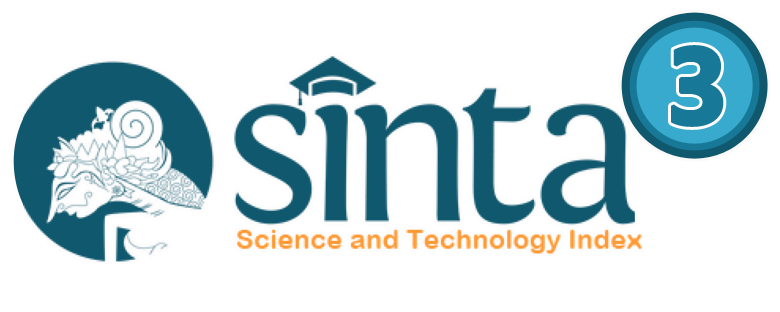Analysis of Global Bank’s Financial Performance with the Clustering K-Means Model
DOI:
https://doi.org/10.35838/jrap.2024.011.02.22Keywords:
Clustering, K-Means, Ratio Analysis, Unsupervised LearningAbstract
Purpose: The purpose of this study is to find out the financial performance of global banks in each cluster for the years 2019 and 2023. In addition, this study is also to find out the position of Indonesia's banks compared to global and ASEAN banks in 2019 and 2023.
Methodology: The analysis model used is that the formation of clusters is based on the ratio of CAR, LDR, NIM, ROA and ROE. Testing was carried out with the K-Means model using SPSS.
Findings: The results of the study show that in general, global banking performance in 2023 is better than in 2019 in 4 clusters out of 5 clusters. However, the number of banks in the Very Good and Good cluster has decreased in 2023 compared to 2019. In addition, the number of banks in the Very Bad cluster also increased in 2023 compared to 2019.
Implication: The increase in the number of banks in the Very Bad cluster needs to be a concern, because the improvement in performance is not as good as other global banks. Local bank supervisory authorities, including the Financial Services Authority in Indonesia, need to pay attention to the performance of banks in the Very Poor cluster.
Originality: This study provides additional information about the condition of banks compared to their peers in 2019 and 2023 at the global, ASEAN and Indonesia levels for bank management, investors and also authorities.
Downloads
References
Berger, A. N., Molyneux, P., & Wilson, J. O. (2020). Banks and the real economy: An assessment of the research. Journal of Corporate Finance, 62, 101513. https://doi.org/10.1016/j.jcorpfin.2019.101513
Carindri, F., & Untara. (2019). The Effect of Risk, Profitability, and liquidity on Capital Adequacy. Journal of Business Economics, 24(1), 36–50. https://doi.org/10.35760/eb.2019.v24i1.1854
Collier, P. M. (2003). Accounting for Managers: Interpreting accounting information for decision-making. John Wiley & Sons Ltd.
Hantono. (2017). Effect of Capital Adequacy Ratio (CAR), Loan to Deposit Ratio (LDR) and Non Performing Loan (NPL) to Return On Assets (ROA) Listed in Banking in Indonesia Stock Exchange. In International Journal of Education and Research (Vol. 5, Issue 1). www.ijern.com
Herman, E., Zsido, K. E., & Fenyves, V. (2022). Cluster Analysis with K-Mean versus K-Medoid in Financial Performance Evaluation. Applied Sciences (Switzerland), 12(16). https://doi.org/10.3390/app12167985
Indonesia Financial Services Authority (OJK). (2020). The Indonesian Financial Services Sector Master Plan 2021-2025. https://ojk.go.id/id/berita-dan-kegiatan/publikasi/Documents/Pages/Master-Plan-Sektor-Jasa-Keuangan-Indonesia-2021-2025/The%20Indonesian%20Financial%20Services%20Sector%20Master%20Plan%202021-2025.pdf
Irfani, A. S. (2020). Manajemen Keuangan dan Bisnis - Teori dan Aplikasi (Bernadine, Ed.; Pertama). PT Gramedia Pustaka Utama.
Kurniawan, D. (2022). Pengenalan Machine Learning dengan Python (Edisi Digital). PT Elek Media Komputindo.
Kusumaningrum, I., & Heikal, J. (2023). Evaluating The Prospects of Financial Performance After Merger at PT Pelabuhan Indonesia (Persero). Adpebi International Journal of Multidisciplinary Sciences, 2(2), 110–125. https://doi.org/10.54099/aijms.v2i2.493
Luh Shintya Anggari, N., & Made Dana, I. (2020). The Effect of Capital Adequacy Ratio, Third Party Funds, Loan to Deposit Ratio, Bank Size on Profitability in Banking Companies on IDX. American Journal of Humanities and Social Sciences Research (AJHSSR), 4(12), 334–338. www.ajhssr.com
Madhulatha, T. S. (2012). An Overview On Clustering Methods. IOSR Journal of Engineering, 2(4), 719–725. www.iosrjen.org
Otoritas Jasa Keuangan. (n.d.). Implementasi Basel. Retrieved April 11, 2023, from https://www.ojk.go.id/id/kanal/perbankan/implementasi-basel/Pages/Road-Map.aspx
Özari, Ç., & Can, E. N. (2023). Financial Performance Evaluating and Ranking Approach for Banks in Bist Sustainability Index Using Topsis and K-Means Clustering Method. Academic Journal of Interdisciplinary Studies, 12(1), 34–50. https://doi.org/10.36941/ajis-2023-0004
Ratnawati, A., Susanto, B., Saepudin, Rudianto, D., Herdiyanti, G., & Khalingga, M. A. (2022). The Effect Of Impaired Loan And Capital Adequacy Ratio (CAR) To Banking Performance At Private National Bank (Listed On Indonesia Stock Exchange 2015-2019). Adpebi International Conference on Management, Education, Social Science, Economics and Technology (AICMEST). http://adpebipublishing.com/index.php/AICMEST/article/view/95/82
Shalev-Shwartz, S., & Ben-David, S. (2014). Understanding Machine Learning: From Theory to Algorithms (First). Cambridge University Press. http://www.cs.huji.ac.il/~shais/UnderstandingMachineLearning
Turkes, M. C. (2017). Cluster Analysis of Total Assets Provided By Banks from Four Continents. Academic Journal of Economic Studies, 4(4), 24–28. https://www.ceeol.com/search/article-detail?id=592287
Vozniakovska, K., Tarasenko, I., Saienko, V., Kirizleyeva, A., Harashchenko, L., & Bodnar, O. (2022). Comparative Characteristics of the Banking Sector in Eastern Europe. International Journal of Computer Science and Network Security (IJCSNS), 22(1), 1–22. https://doi.org/10.22937/IJCSNS.2022.22.1.84
Downloads
Published
Issue
Section
License
Authors who publish with this journal agree to the following terms:
- Authors retain copyright and grant the journal right of first publication with the work simultaneously licensed under a Creative Commons Attribution-ShareAlike 4.0 International License that allows others to share the work with an acknowledgement of the works authorship and initial publication in this journal.
- Authors are able to enter into separate, additional contractual arrangements for the non-exclusive distribution of the journals published version of the work (e.g., post it to an institutional repository or publish it in a book), with an acknowledgement of its initial publication in this journal.
- Authors are permitted and encouraged to post their work online (e.g., in institutional repositories or on their website) prior to and during the submission process, as it can lead to productive exchanges, as well as earlier and greater citation of published work (See The Effect of Open Access).














